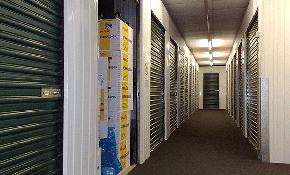The last few years have been turbulent for commercial real estate. Between the pandemic-induced rise of tech, supply chain concerns and the growing concerns with climate change, business intelligence has become even more crucial. According to Moody’s Analytics’ Vivek Thadani, senior director of product strategy, CRE companies are undergoing a sea change, and it may require leveraging alternative dimensions of data and risk to understand it.
“We are now living in a highly accelerating, evolving, rapidly changing market,” Thadani said. “Many unfortunate events occurred in the last two years that have impacted the CRE industry unequally in many ways. Alternative data and risk assessment help identify patterns that you can’t see traditionally, and in most cases the alternative data is more readily available than the traditional kind.”
CRE data and risk come from three buckets, according to Thadani: traditional, alternative and insightful. The first includes property vacancy, market absorption, rent growth and other established metrics. Alternative data are fast-moving figures ranging from foot traffic to consumer spending. The insightful bucket can instruct on things such as the broad impact of climate risk and customer data that signal the makeup of your tenants, including whether or not they will have major supply chain risks in the future.
A rapidly evolving field, the study of climate change has moved from the academic domain to the practitioner’s, where the focus is now on daily business impact. A very complex, still evolving subject with so many variables, including temperature, heat, and other weather patterns, goes beyond traditional risk models.
“There’s a real uncertainty on how to use data and how to quantify the impact,” Thadani said. “How do you take all of that data and make it practical to people in the field trying to do deals and make good decisions? That’s why it’s important to harness old and new types of risk assessments with the right technology tools.”
As for supply chains, Thadani explains that CRE and logistics pros spent 20 years trying make them as lean as possible. Then, after the pandemic, the emphasis turned to resilience.
“Now the focus is an anti-fragile supply chain. You need a lot of CRE to make that possible,” he added, noting the extended cycle for solution implementation. “We’re seeing folks on the front line asking for more of that [alternative] data at the top of the funnel to assess these impacts.”
Moody’s has witnessed across a broad client range the investment in the front-line tools and technology and skills to access the most data possible. From there it’s crucial that the data is shared across the entire organization, not just the risk department. Again, it’s the new practitioner application building on top of the traditional approach: a question about the climate risk of a particular location, for example, needs to be evaluated with the most information possible and the most hands on deck.
“The key lesson in the last three years is that it’s almost impossible to predict what’s right around the corner, including macro geopolitical shocks,” Thadani said. “Firms investing in CRE want good, reliable data to be able to distinguish insights from all the noise. We’re never going to precisely predict every risk in the future so we’re trying to build systems that evolve with risks and get all teams in a CRE organization to incorporate those risks.”

















 Copyright © 2024 ALM Global, LLC. All Rights Reserved.
Copyright © 2024 ALM Global, LLC. All Rights Reserved.